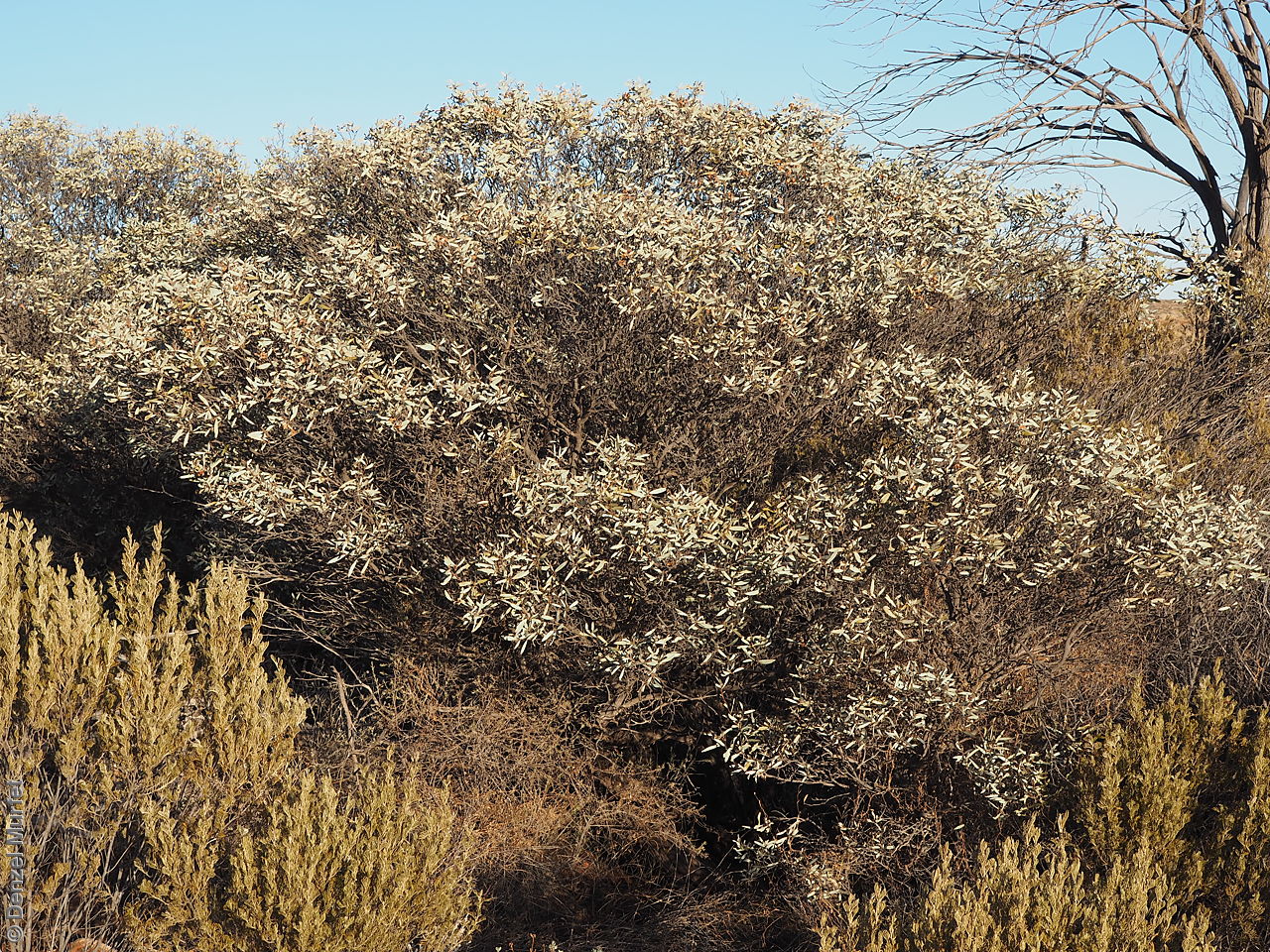
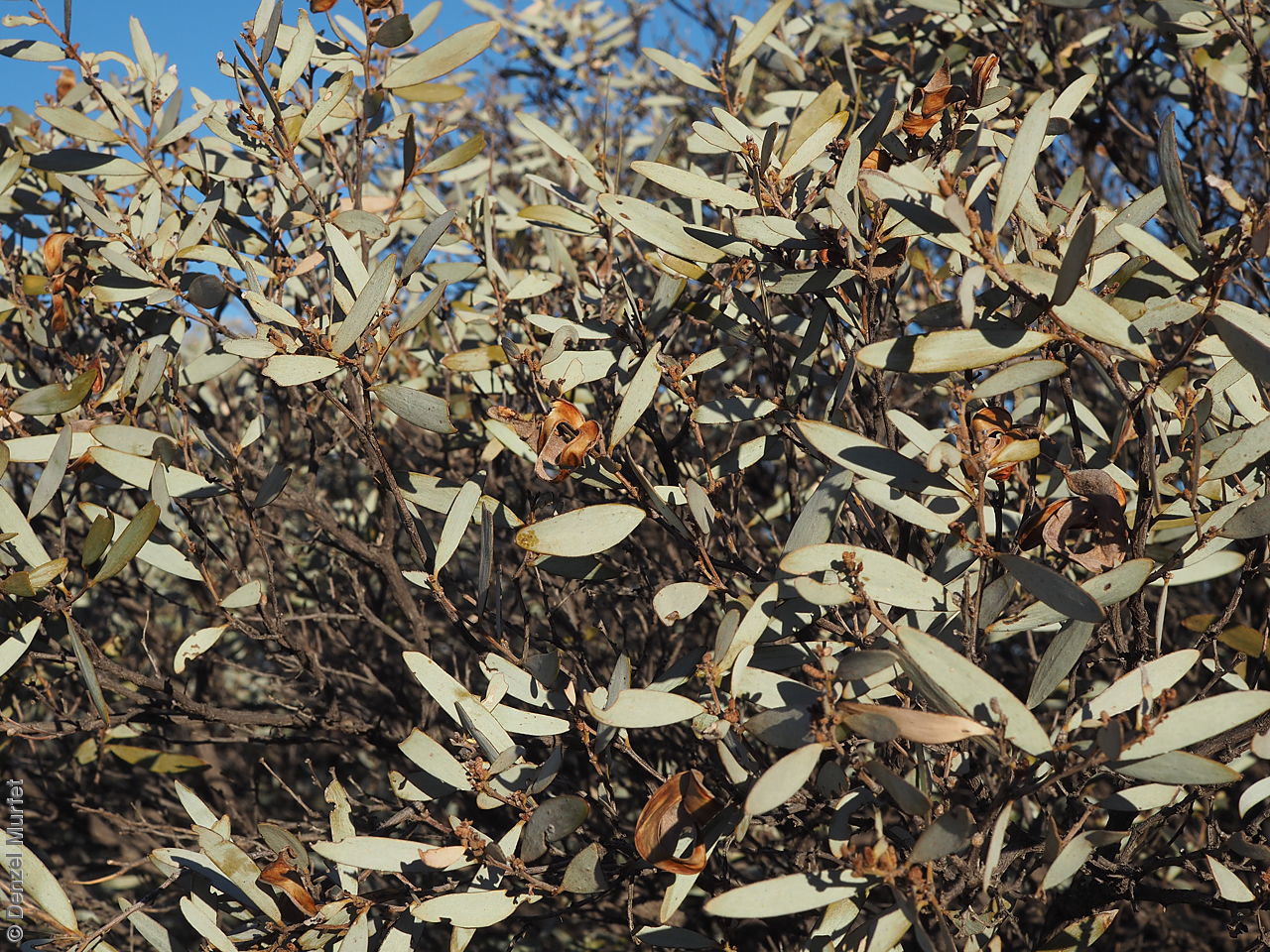
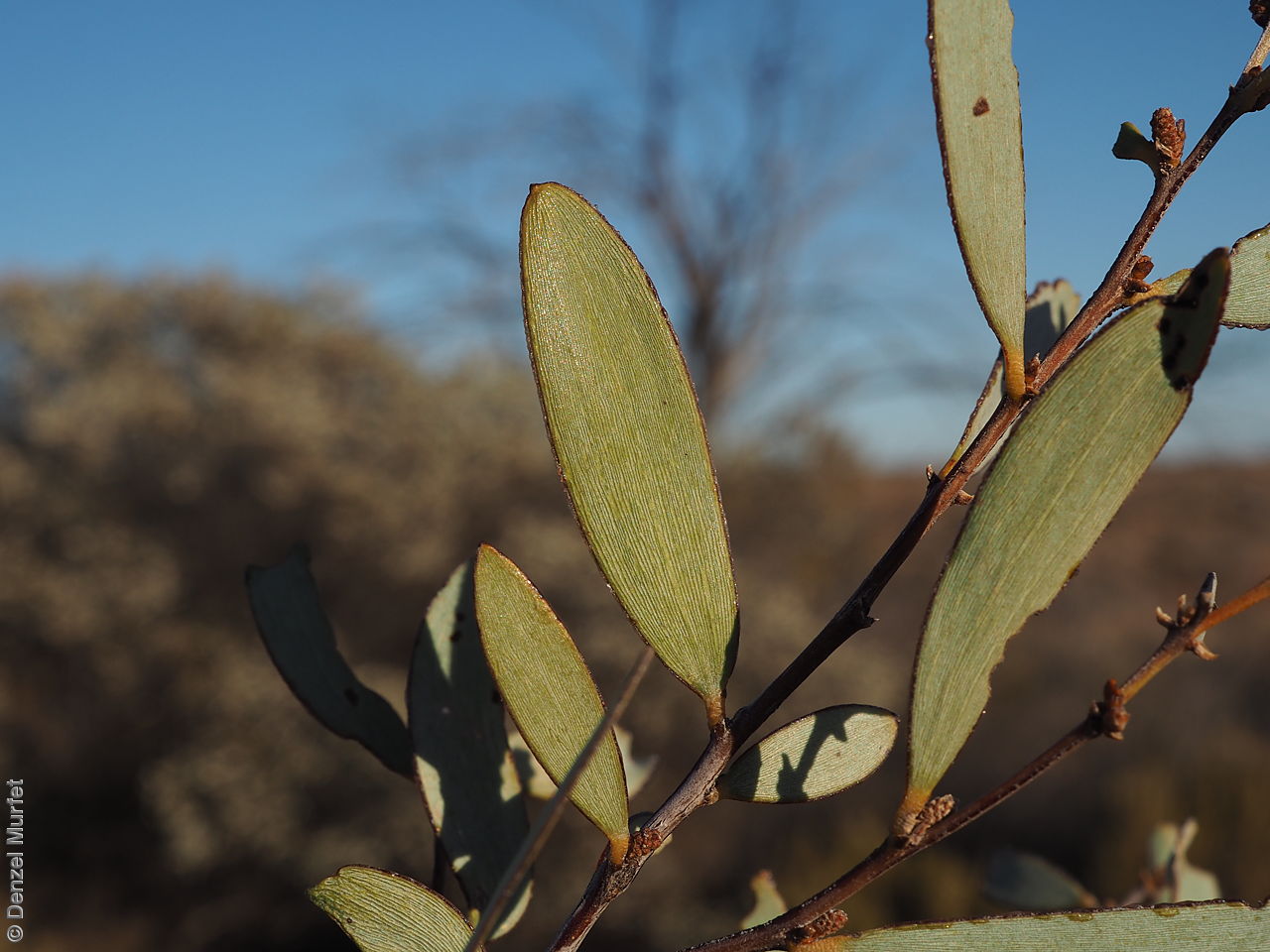
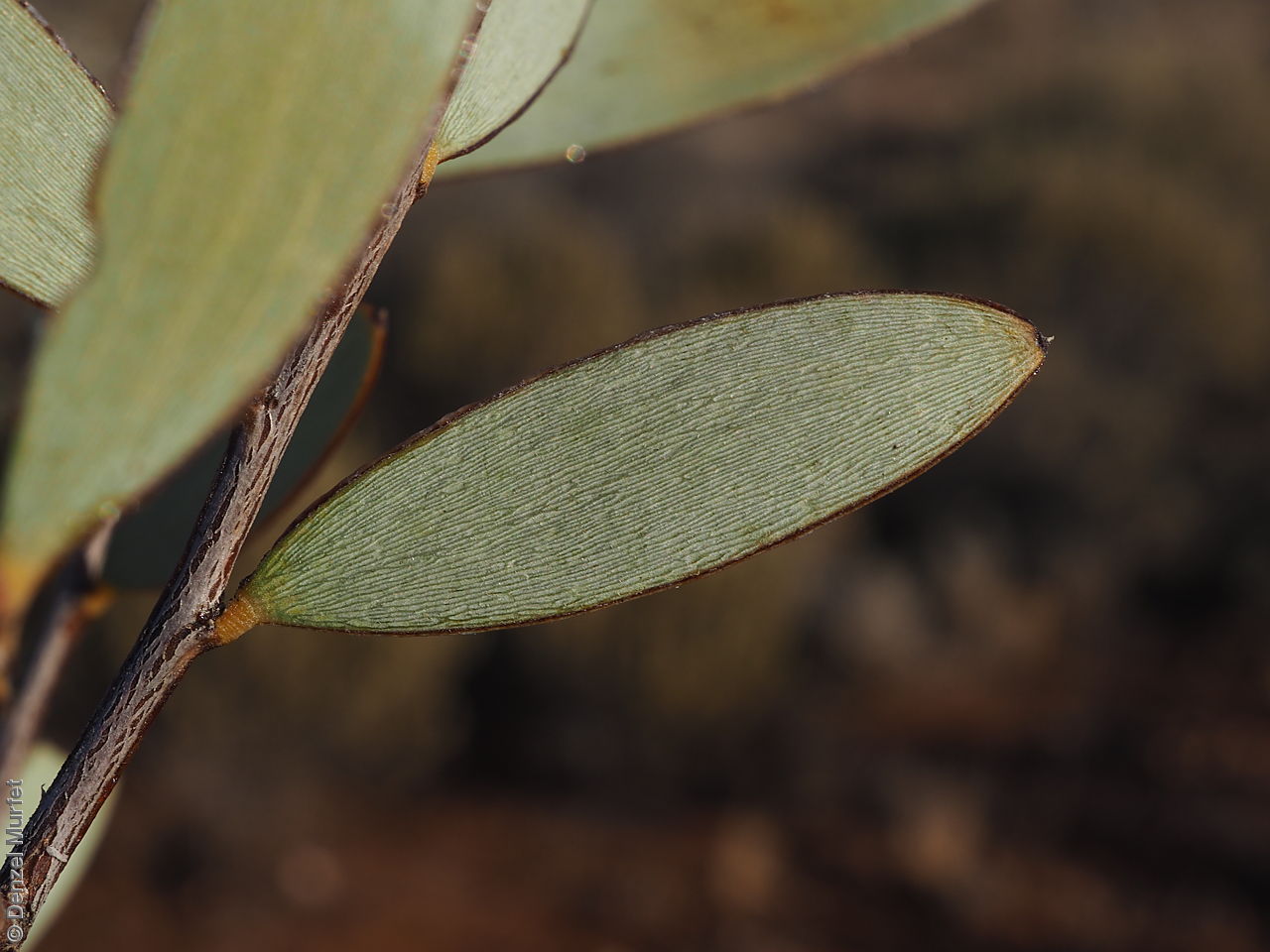
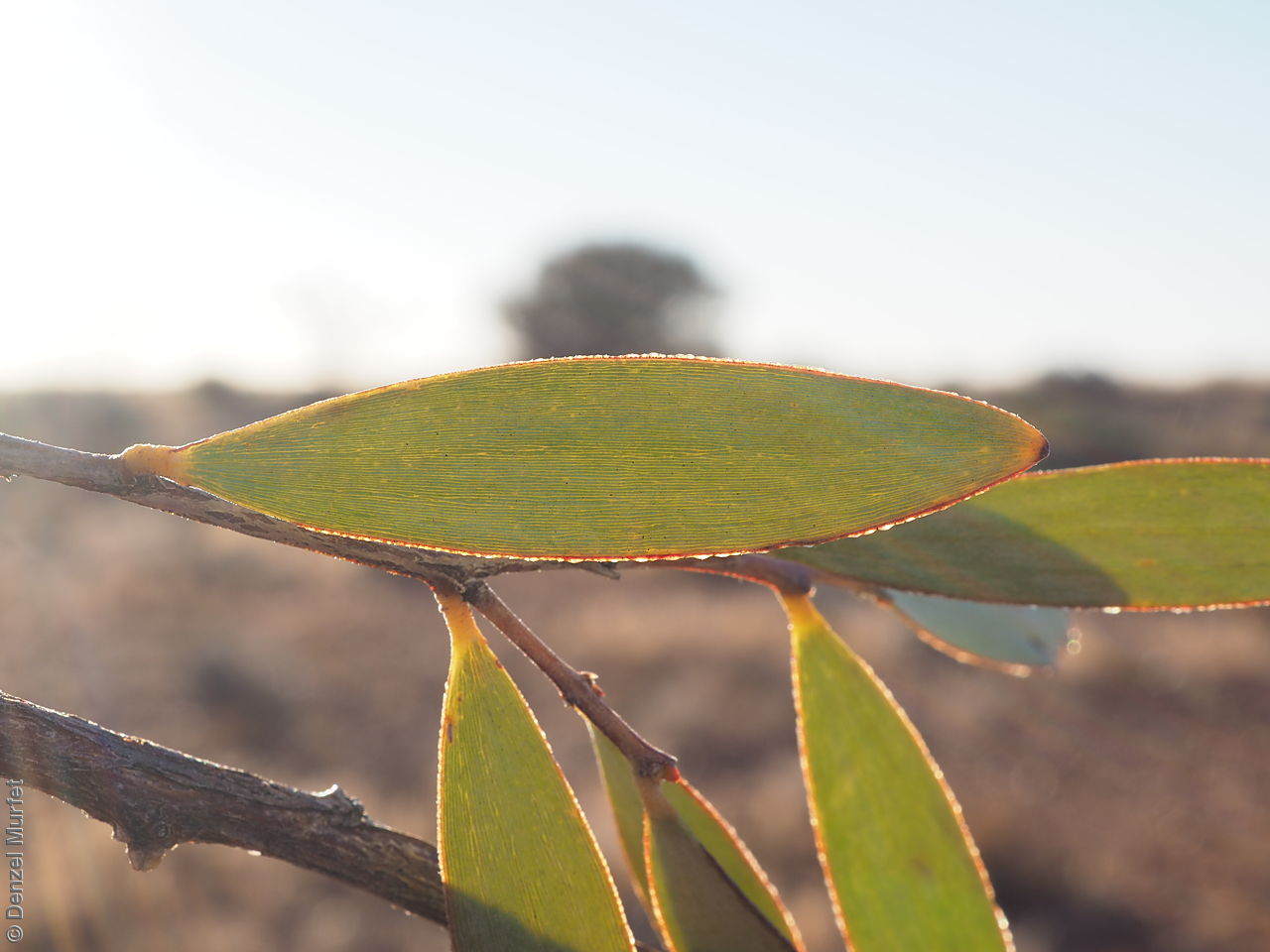
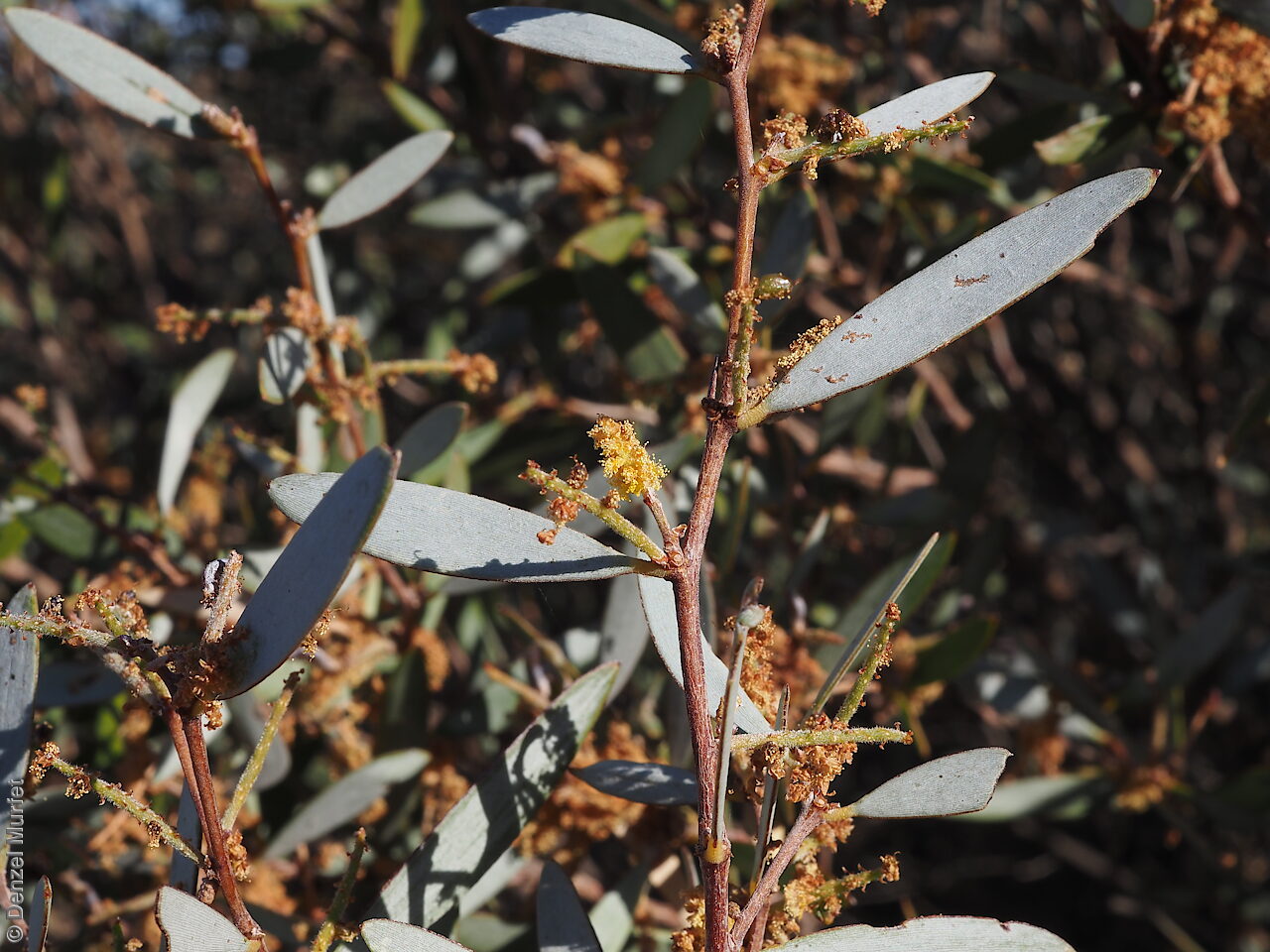
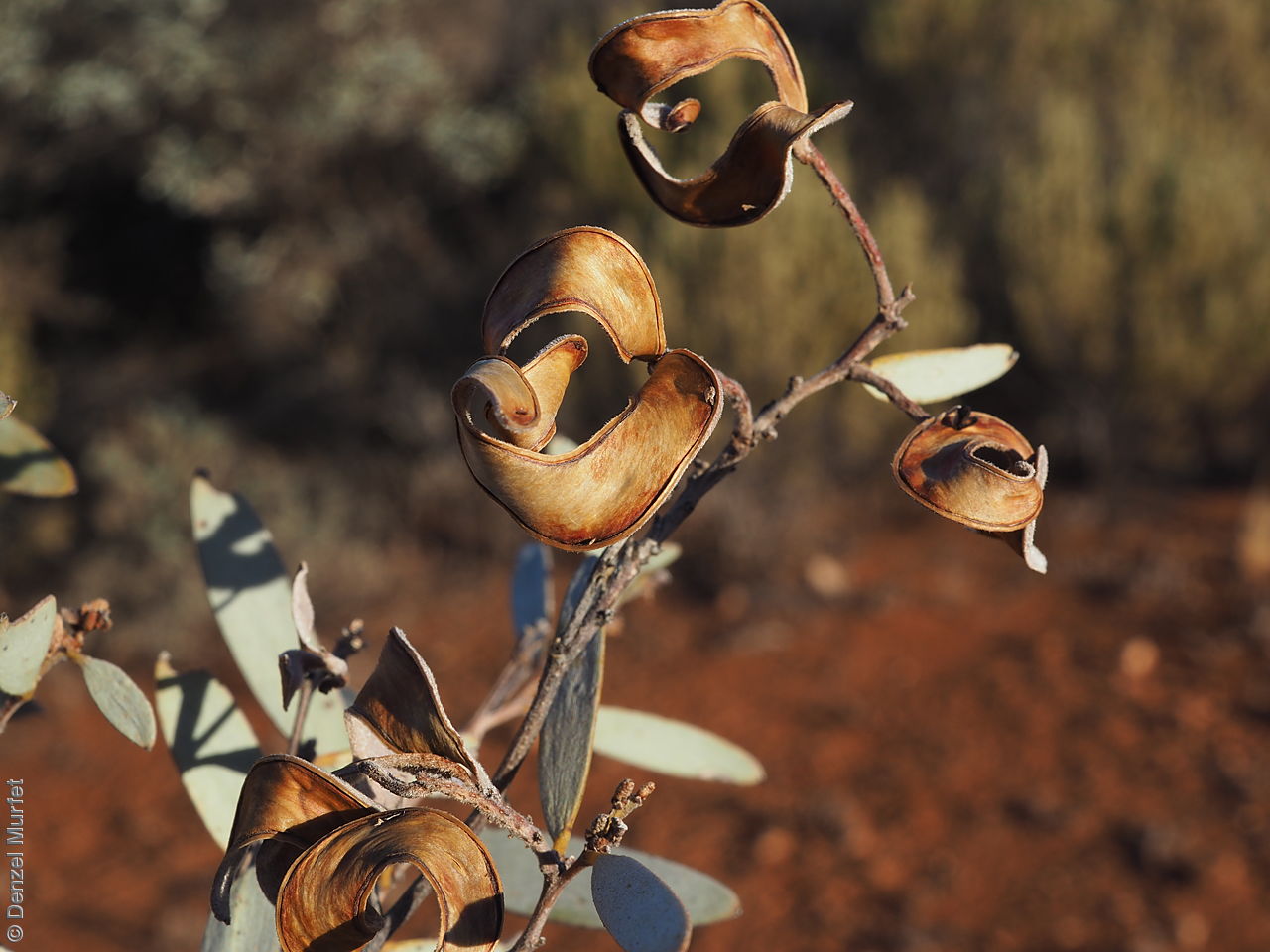
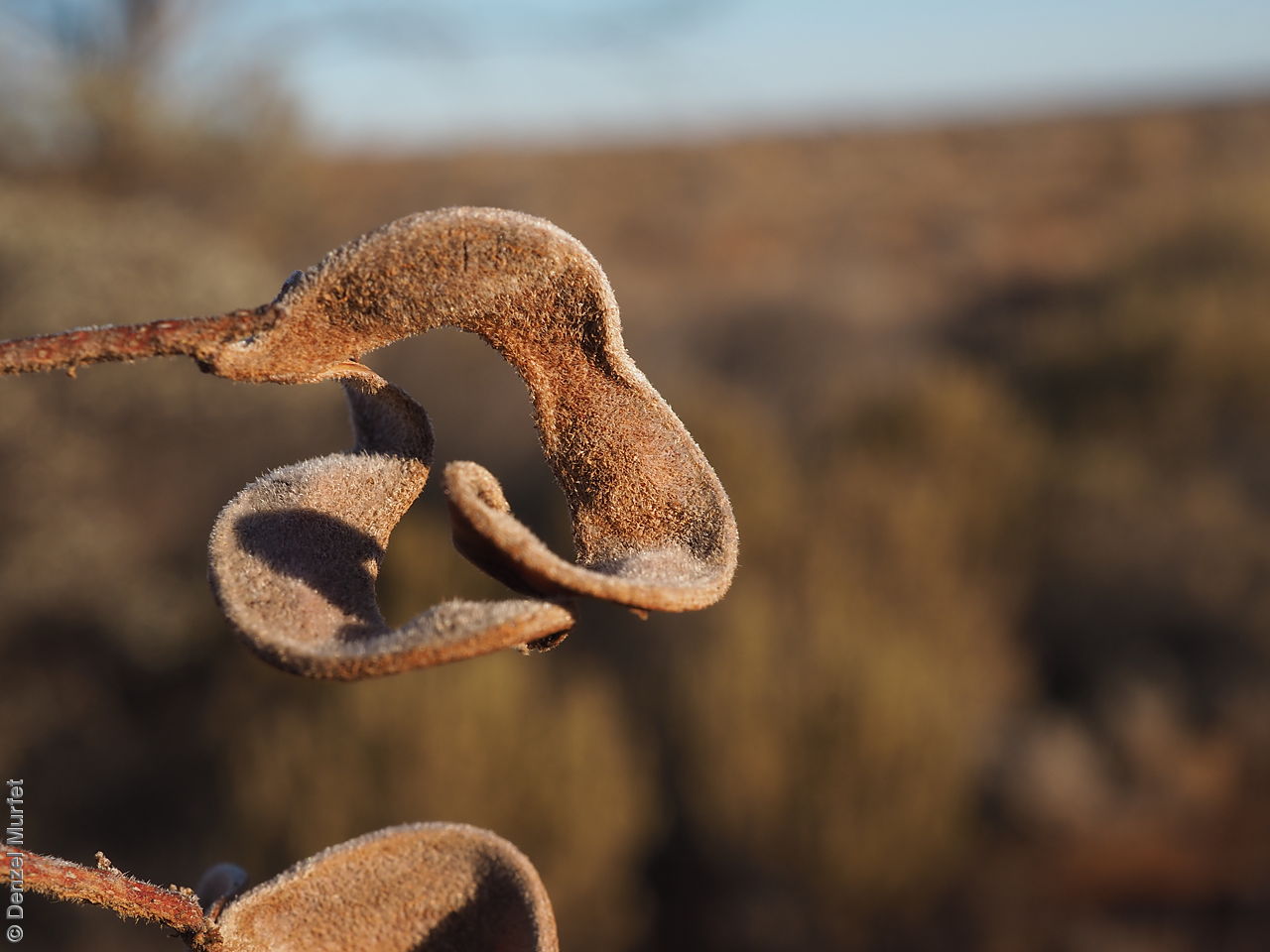
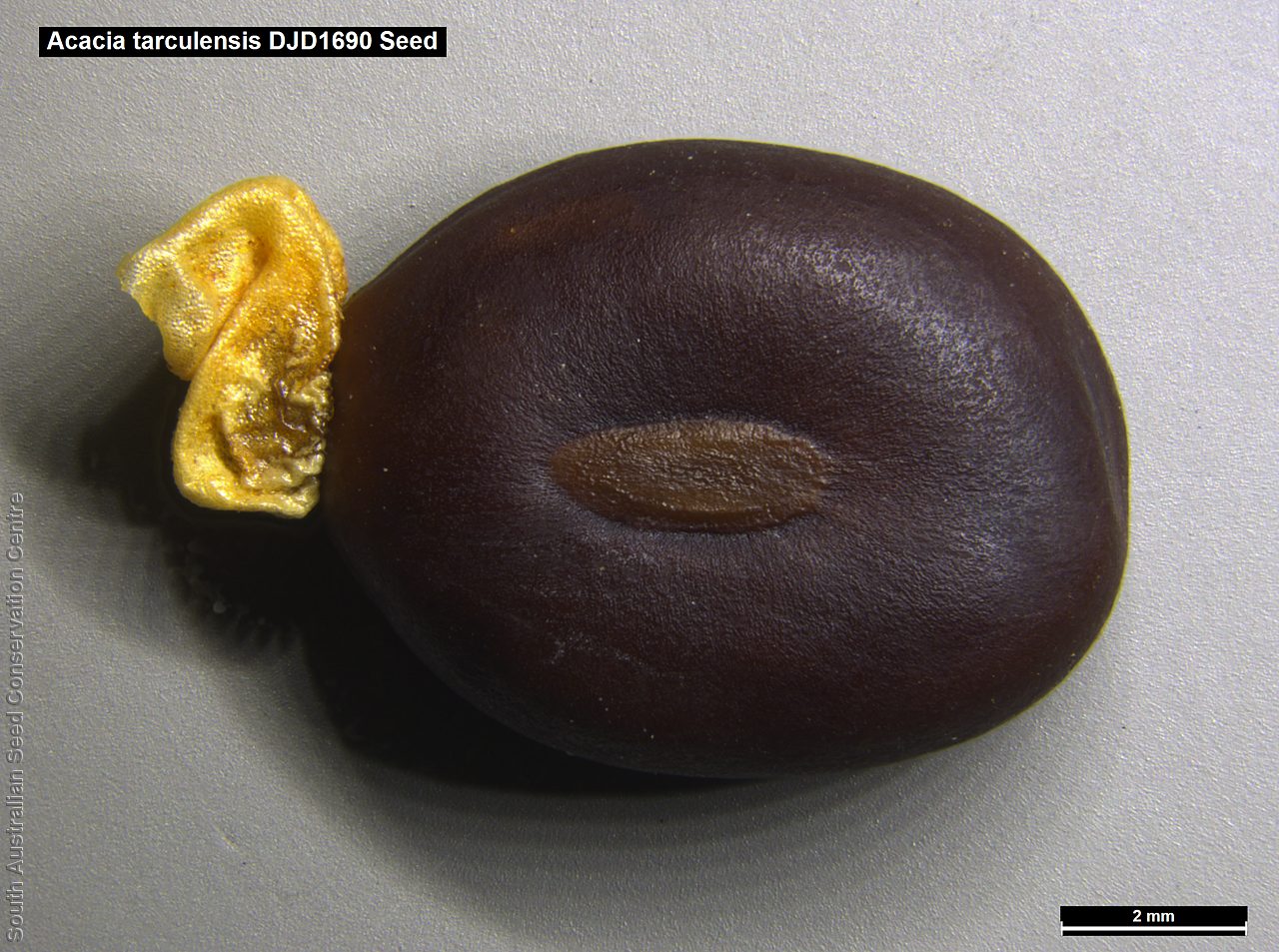
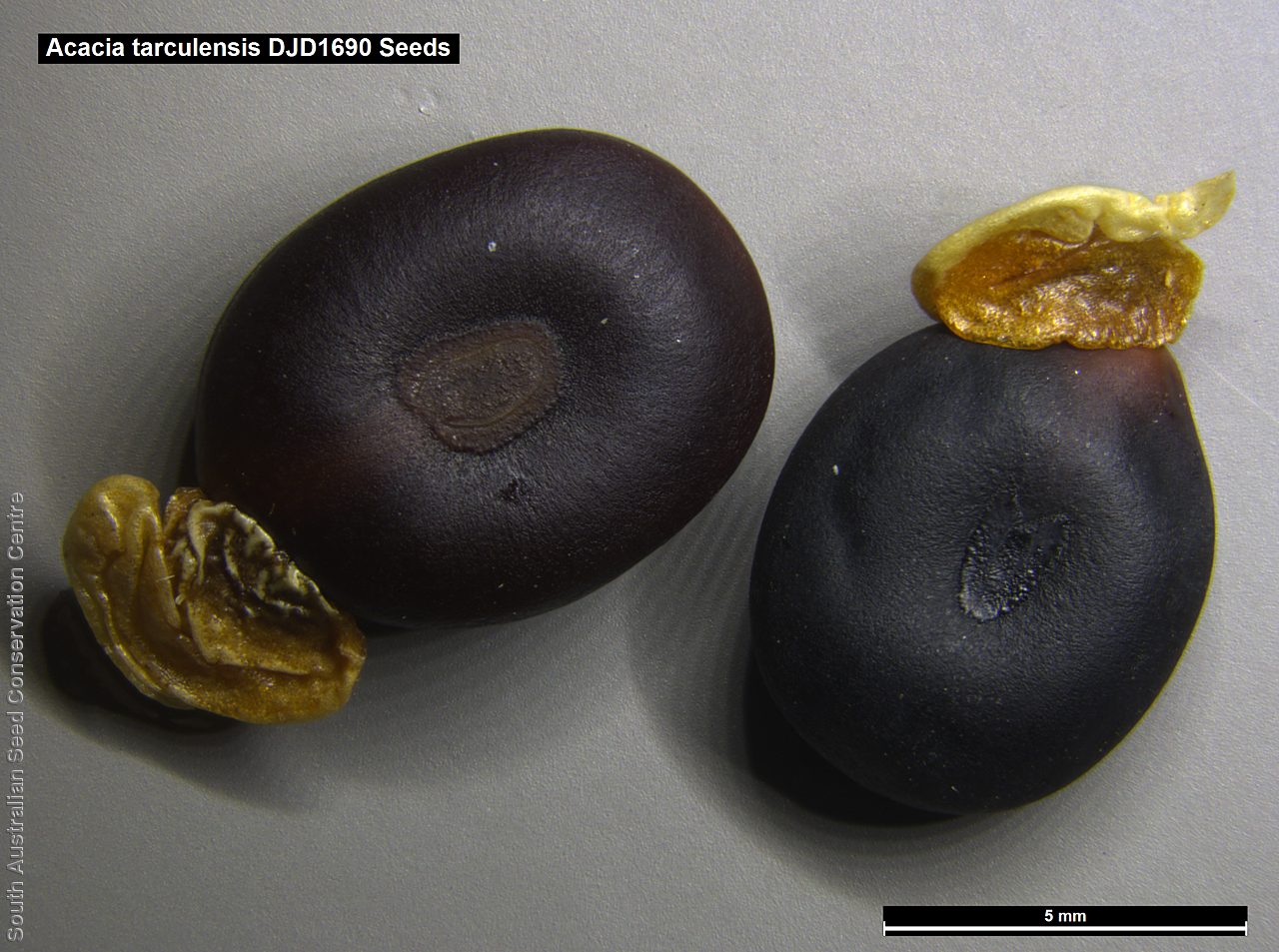
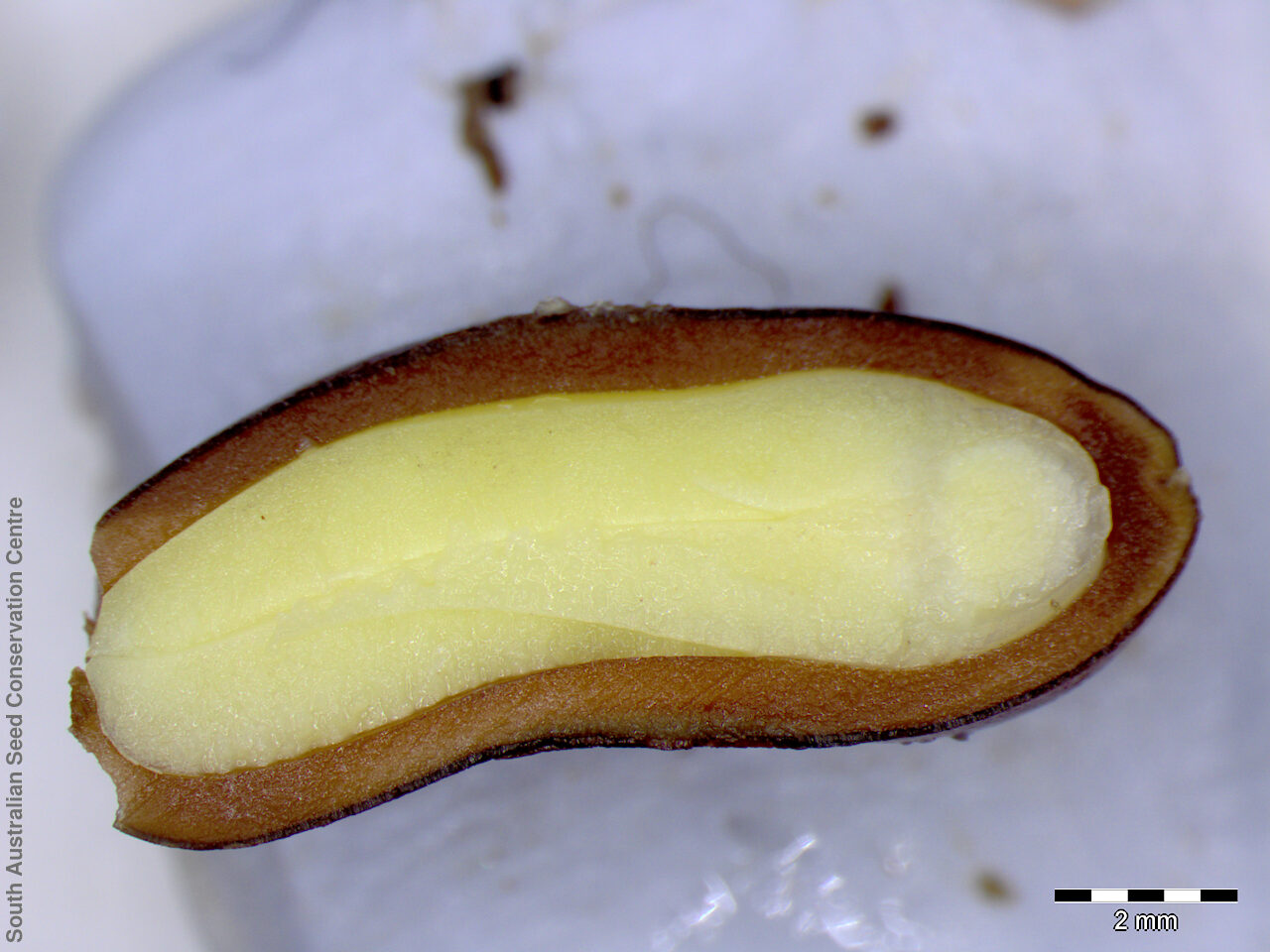
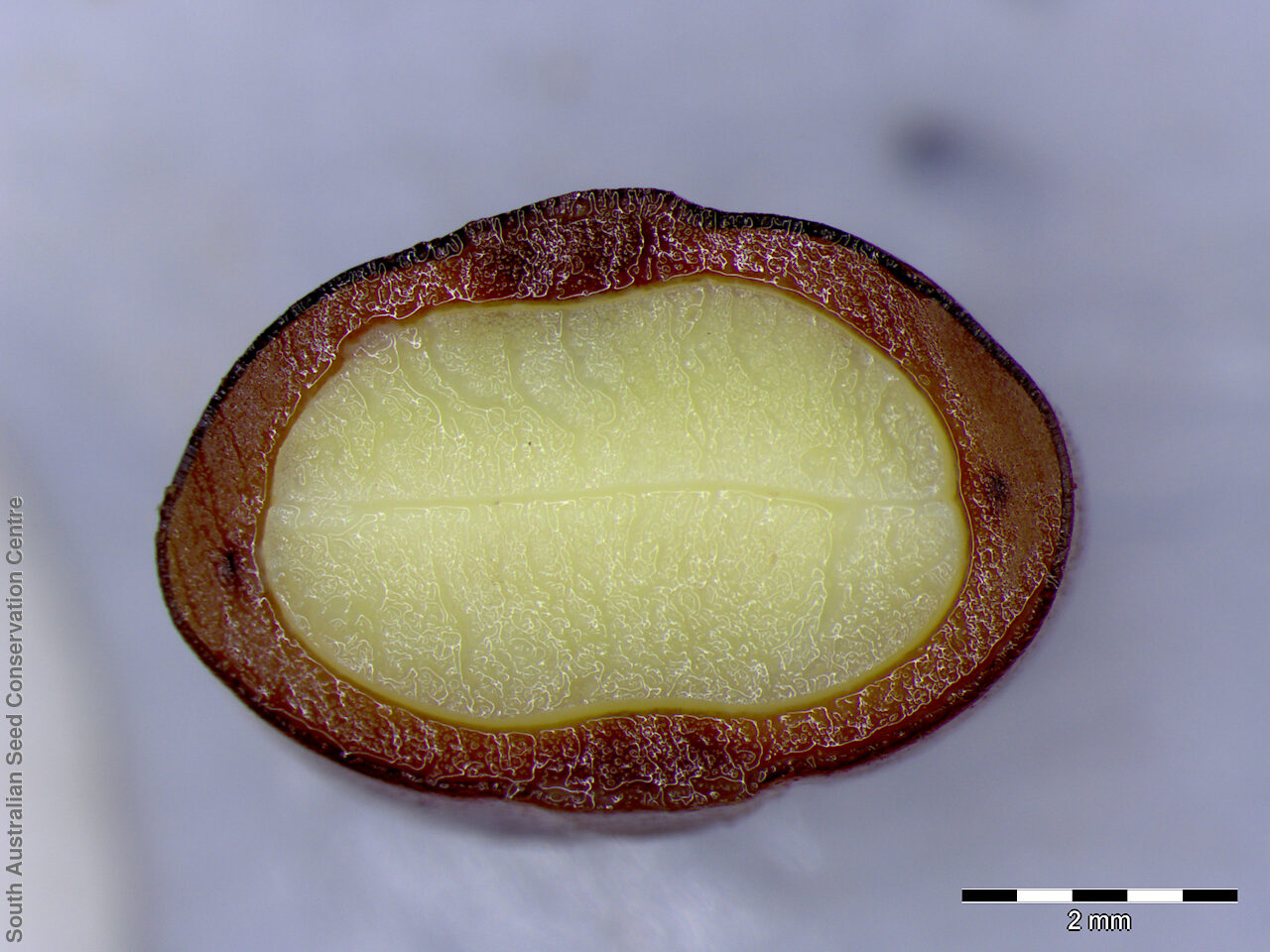

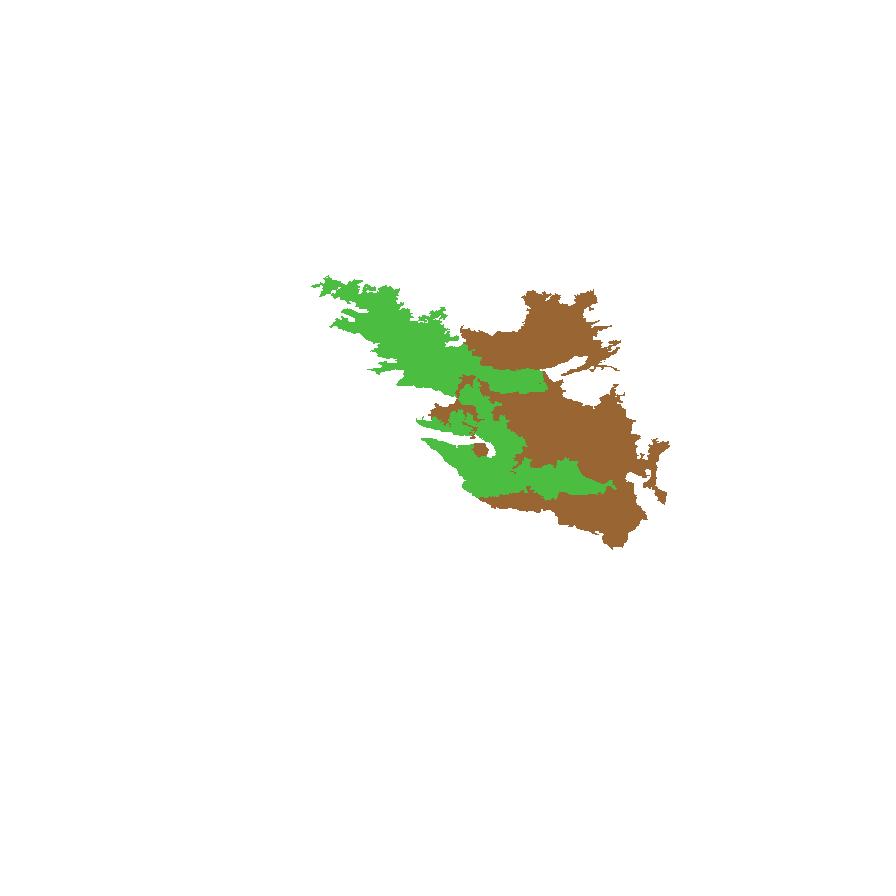
Botanical art
Common names
Tarcoola Wattle
Steel Bush
Etymology
Acacia from the Greek 'akakia' and derived from 'ake' or 'akis' meaning a sharp point or thorn and 'akazo' meaning to sharpen. Dioscorides, the Greek physician and botanist used the word in the 1st century AD for the Egyptian thorn tree, Acacia arabica. Tarculensis refers to the location, Tarcoola, where the type specimen was collected by J. W. Mellor in June, 1912.
Distribution and status
Endemic to South Australia and found on northern Eyre Peninsula and the Gairdner-Torrens region, growing on rocky hillsides and ridges in tall open shrubland or low open woodland. Native. Common in South Australia.
Herbarium regions: North Western, Gairdner-Torrens, Eyre Peninsula
NRM regions: Alinytjara Wilurara, Eyre Peninsula, South Australian Arid Lands
AVH map: SA distribution map (external link)
Plant description
Dense, distinctly glaucous, spreading, rounded, or often flat-topped shrubs to 3 m high and wide; grey, rough and flaky bark and angular, reddish-brown, slightly pubescent branchlets. Leaves oblong to oblong-lanceolate or elliptic to 5.5 cm long and 14 mm wide; straight or slightly curved, flat, rigid, coriaceous, glaucous, golden or silvery-pubescent when young. Numerous inconspicuous veins with sometimes 2-3 veins more prominent.
Margins prominent, reddish-brown, thick; glands basal. Inflorescences simple, axillary;1-2 per axil with cylindrical, mid-yellow flower-heads. Flowering between May and August or occasionally throughout the year, after good rains. Fruits are hard, grey, narrowly oblong pod to 9 cm long and 12 mm wide, flattish, much curved, densely tomentose with thickened margins. Seeds are hard, dark brown to black, ovoid to globular seed to 8 mm long and 6 mm wide. Seed embryo type is investing.
Seed collection and propagation
Collect seeds between September and November. Collect mature pods that are turning brown, with hard, dark seeds inside. Place the pods in a tray and leave to dry for 1-2 weeks or until the pods begin to split. Then rub the dried pods with a rubber bung to dislodge the seeds. Use a sieve to separate any unwanted material. Store the seeds with a desiccant such as dried silica beads or dry rice, in an air tight container in a cool and dry place. From one collection, the seed viability was high, at 90%. This species has physical dormancy that needs to be overcome for the seed to germinate (e.g. nicking or softening the seed coat).
| Location | No. of seeds (weight grams) | Number of plants | Date collected | Collection number Collection location | Date stored | % Viability | Storage temperature |
|---|---|---|---|---|---|---|---|
| BGA MSB | 2,700 (262.65 g) 2,700 (262.65 g) | 50+ | 3-Nov-2009 | DJD1690 Gairdner-Torrens | 1-Jun-2010 | 90% | -18°C |
Number of plants: This is the number of plants from which the seeds were collected.
Collection location: The Herbarium of South Australia's region name.
% Viability: Percentage of filled healthy seeds determined by a cut test or x-ray.